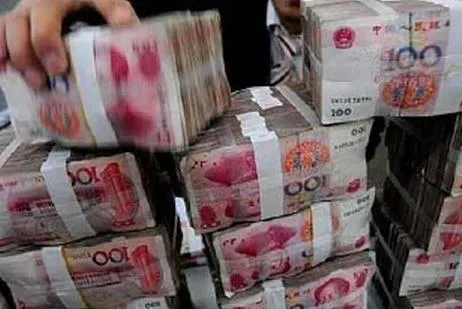
China’s shadow banking sector now valued at over U$5.8t
It's 69% of China's GDP.
JPMorgan Chase said this total was equivalent to 69% of China’s gross domestic product and almost double what it was two years earlier. Previous estimates from other sources said the shadow banking sector accounted for 60% of GDP.
JPMorgan said it is the rapid growth in shadow banking, instead of its size, that could generate systemic risk.
Previous means estimates for the size of China’s sector have ranged from as low as 2 trillion to 3 trillion renminbi to a high of 30 trillion renminbi.
JPMorgan said there has been considerable discussion on the rapid growth of the shadow banking system in China, and as a consequence, the buildup of risks in China’s financial sector. It noted, however, that the term shadow banking is at best vaguely defined in China.
JPMorgan estimaChina’s shadow banking sector larger than anticipated
Valued at over U$5.8 trillion, said JPMorgan Chase.
The U.S. financial giant said this total was equivalent to 69% of China’s gross domestic product and almost double what it was two years earlier. Previous estimates from other sources said the shadow banking sector accounted for 60% of GDP.
JPMorgan said it is the rapid growth in shadow banking, instead of its size, that could generate systemic risk.
Previous means estimates for the size of China’s sector have ranged from as low as 2 trillion to 3 trillion renminbi to a high of 30 trillion renminbi.
JPMorgan said there has been considerable discussion on the rapid growth of the shadow banking system in China, and as a consequence, the buildup of risks in China’s financial sector. It noted, however, that the term shadow banking is at best vaguely defined in China.
JPMorgan estimates the largest shadow banking segment comes from trust companies and wealth management products that emerged in China as a way to bypass regulation on maximum deposit rates, and are typically short term (less than six months).
The remainder comes from sources that include securities firms, finance companies, pawnshops, and underground lending (informal lending activity in which individuals lend directly to each other that amounts to 4.8% of GDP).
China’s shadow banking sector faces default risks, with borrowers including local governments, real estate companies, and small companies putting money into questionable investments.
It is also grappling with liquidity problems, with a mismatch between repayment schedules and project returns; and legal and regulatory risks, including a lack of clarity about whether the Chinese government ultimately guarantees the borrowing.
tes the largest shadow banking segment comes from trust companies and wealth management products that emerged in China as a way to bypass regulation on maximum deposit rates, and are typically short term (less than six months).
The remainder comes from sources that include securities firms, finance companies, pawnshops, and underground lending (informal lending activity in which individuals lend directly to each other that amounts to 4.8% of GDP).
China’s shadow banking sector faces default risks, with borrowers including local governments, real estate companies, and small companies putting money into questionable investments.
It is also grappling with liquidity problems, with a mismatch between repayment schedules and project returns; and legal and regulatory risks, including a lack of clarity about whether the Chinese government ultimately guarantees the borrowing.




![Lorem Ipsum [ABF 1]](https://cmg-qa.s3.ap-southeast-1.amazonaws.com/s3fs-public/styles/exclusive_featured_article/public/2025-03/a_hand_pointing_to_a_futuristic_technology_5b87c9d0e3_1.png.webp?itok=2w0y1WhS)


![Cross Domain [Manu + SBR + ABF + ABR + FMCG + HBR + ]](https://cmg-qa.s3.ap-southeast-1.amazonaws.com/s3fs-public/styles/exclusive_featured_article/public/2025-01/earth-3537401_1920_4.jpg.webp?itok=WaRpTJwE)







 Advertise
Advertise

